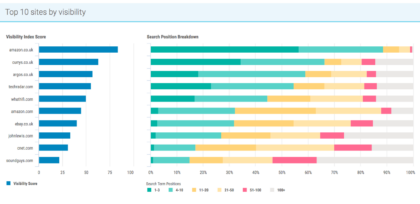How to own the top spot in your sector
06 Jun 2022|5 MIN READ
In our latest webinar, Pi’s Head of Product & Marketing, Sophie Moule and Head of Solutions, John Barker discussed how to own the top spot in your sector using Pi.
Providing key takeaways and tips, Sophie and John went over:
- The value of looking at search visibility
- How to analyse your market and identify new opportunities
- And, how the most visible sites earn their top spots
With increasing competition how can you stand out from the crowd and own the top spot in your sector?
At Pi, we know not every website is the same. However, we do have a strategy that we know delivers results.
Whether you’re optimising an eCommerce, publishing or affiliates website, if you can apply our ‘Research, Plan, Implement and Evaluate’ strategy you’ll be seeing the right results in no time.
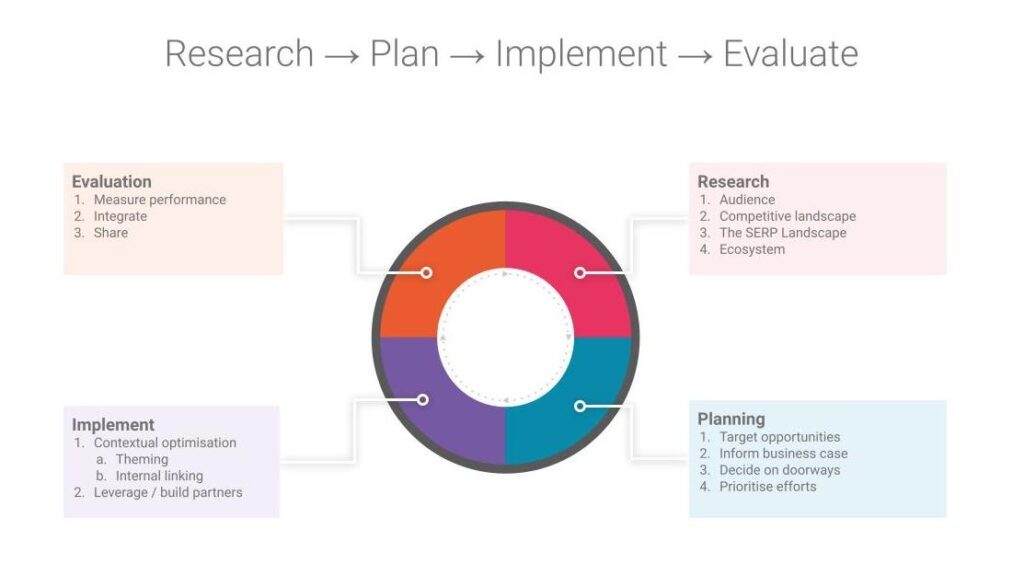
Pi Datametrics | Research, Plan, Implement & Evaluate Flywheel
Research
Find your most valuable searches
In the research phase, it’s important to have a grasp on what your most valuable searches are so you know where to start and where to go next.
We know understanding how much ROI you will get on a particular term hasn’t always been straightforward for SEO teams. That’s why we built our very own Organic Revenue chart so you know where to focus your efforts first.
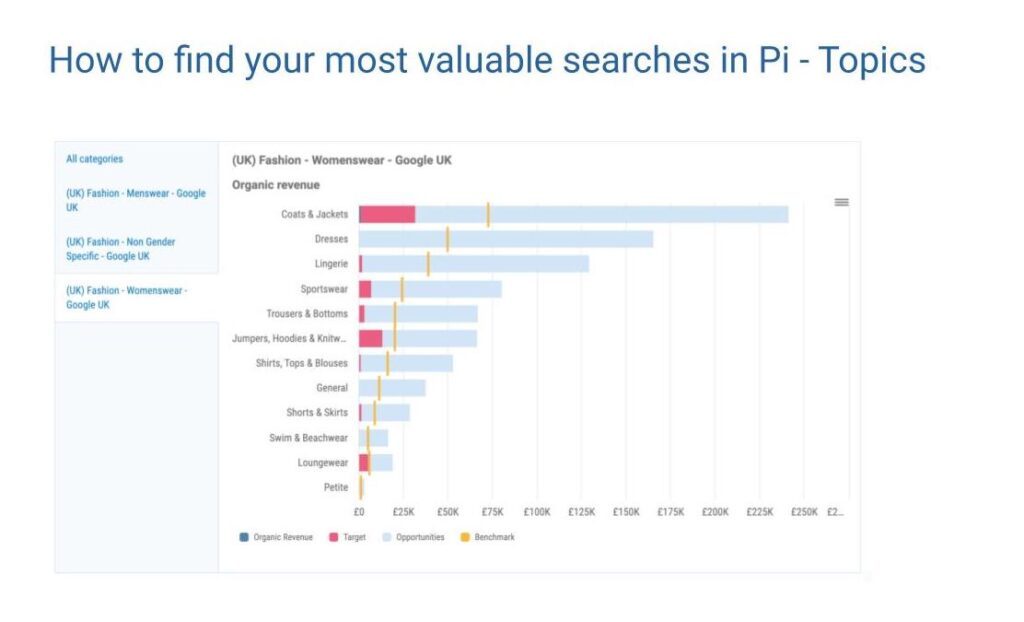
Pi Datametrics | Organic Revenue chart
This chart will help you gain a better understanding of your current performance and the value of this, where the benchmark sits for a particular market, and the revenue opportunity available within a particular category.
Once you’ve identified the topics and categories you need to focus on, it’s time to dive into the more granular data.
Using Pi’s Position Explorer Table you can filter terms by position, search volume and movement in the SERPs to narrow your efforts further.
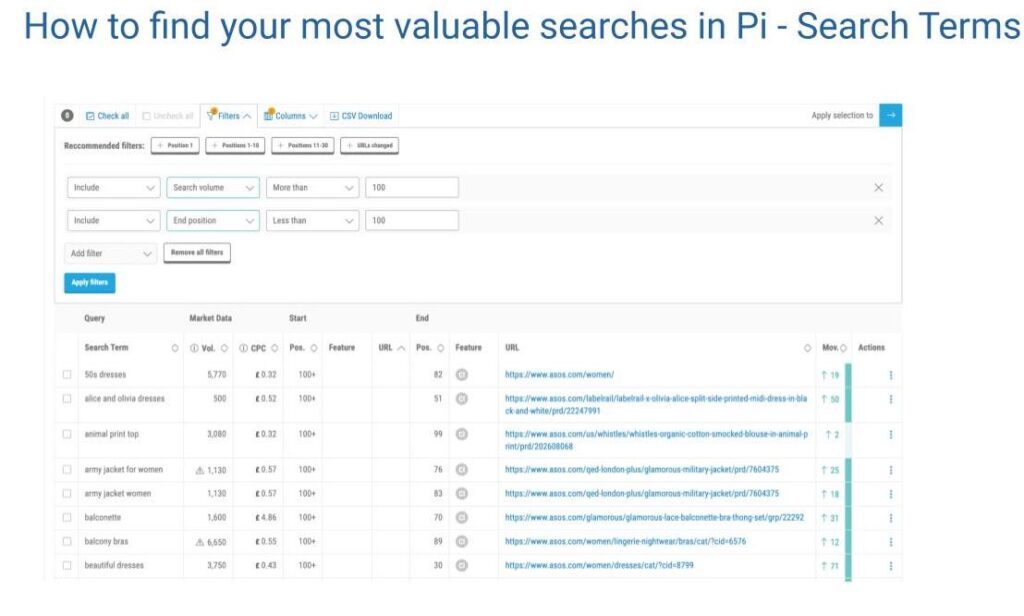
Pi Datametrics | Position Explorer Table
Retain value whilst looking for new opportunities
When looking at the opportunity to rank for new search terms it’s important to retain your existing value.
Once you have identified high-value new opportunity terms, ensure you have a good grasp on your protection terms (the terms that already deliver a lot of value for you).
It’s a good idea to set up some focus workspaces for your new opportunity terms and your protection terms. You can then set up alerts to notify you of any movement.
Discovering new terms
The data discovery tool in Pi allows users to explore potential gaps in search terms that they haven’t already got in their keyword universe.
Utilise this tool during your research phase to understand competitor activity, what search terms are growing with the trends, and the different SERP features that return for your search terms.
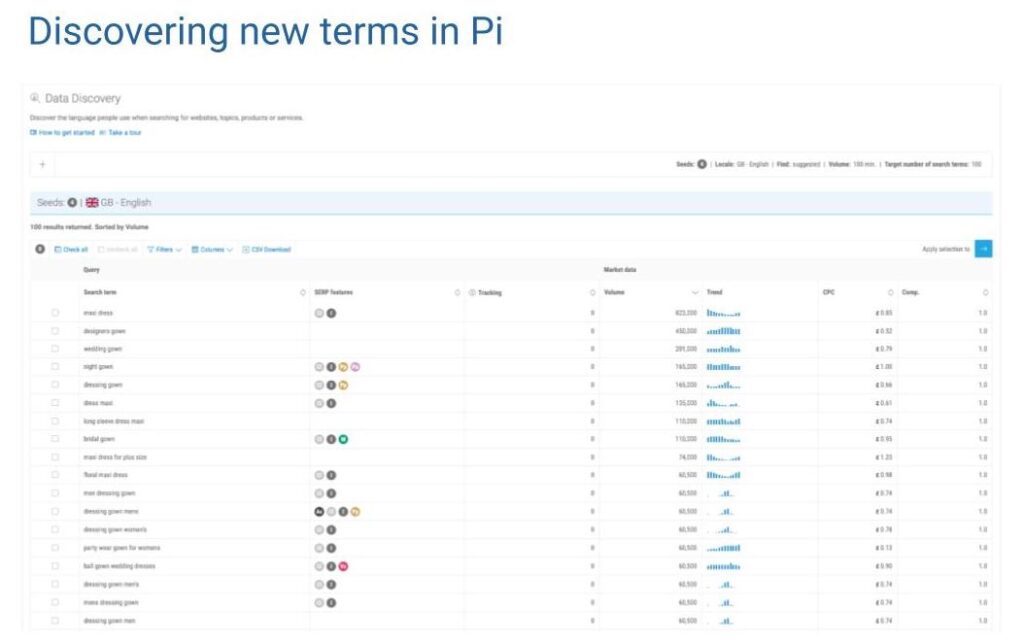
Pi Datametrics | Data Discovery Tool
Set tangible goals
Benchmark where you are and where you want to get to. Although SEO isn’t always predictable, you can still set realistic and achievable goals to aim towards.
Think about what will make a difference to the bottom line of your business. Whether it’s rankings, traffic, revenue, share of voice or visibility – ensure you list out KPIs so you can shout about your success.
Own the top spot in your sector
Book your demoPlan
What SERP features should you integrate into your content plans?
To own the top spot in your sector you will need to be doing more than publishing long-form content to secure classic links.
When you analyse the search landscape – particularly the SERP features – you can inform the way you shape your content.
We know the SERP landscape is constantly changing, this means the opportunities you’re presented with will change too. So when it comes to building out your content strategy, it’s important to note which features are prevalent for your search terms and ask yourself the following questions:
- What are the most common SERP Features appearing for my topic?
- How should I connect different content types together to avoid cannibalization?
- How do SERP landscapes differ for evergreen vs trending topics?

Pi Datametrics | SERP Radar
Monitor historic search trends…
And look for patterns to plan your content around.
Of course, search trends are often impacted by external factors out of your control. But, some trends can be consistent and predictable if you’re keeping a close eye on them.
To make the most of these trends, plan, publish and optimise content in time for the key peaks.
Inform your content team of these peaks early. That way they can create a plan that utilises the uptick in searches at particular times of the year. If your content is published at the right time, it’ll achieve maximum visibility.

Pi Datametrics | Search volume over time
Plan, Influence, Peak, Repeat (PIPR)
When it comes to the repeatable trends mentioned above you can deploy different tactics for the peaks and troughs.
If you plan in advance you can ensure you are influencing your target audience when the rise of the peak is happening as well as inform your paid search teams when particular terms are in-demand in order to avoid competitive CPCs.
At the end of a peak, take stock and decide whether you think the trend will be repeated and whether you can deploy similar tactics next time. You’ll know whether it’s a good idea to refresh a page to optimise it ready for the next peak or whether you can move your focus elsewhere.
In our comprehensive eCommerce strategy guide, we discuss our PIPR strategy in more depth – download your copy here.
Implement
Review top performers in your sector
Knowing who the top performers are in your sector will help you to prioritise which strategies to implement.
Not sure who’s the market leader in your sector? Check out our market leaderboards here.
Once you know who they are, it’s time to analyse what they’re doing to earn the top spot in your sector…
Use Pi to find high-value competitor links
Backlinks are still vitally important. And a great way to really dig into the success of your competitors is by looking at their high-value backlinks.
Using Pi’s backlinking tool you can view which publications are pushing traffic to your competitors’ sites as well as the publications increasing authority and trust. Once you have this information, update your strategy to go after the same sites.
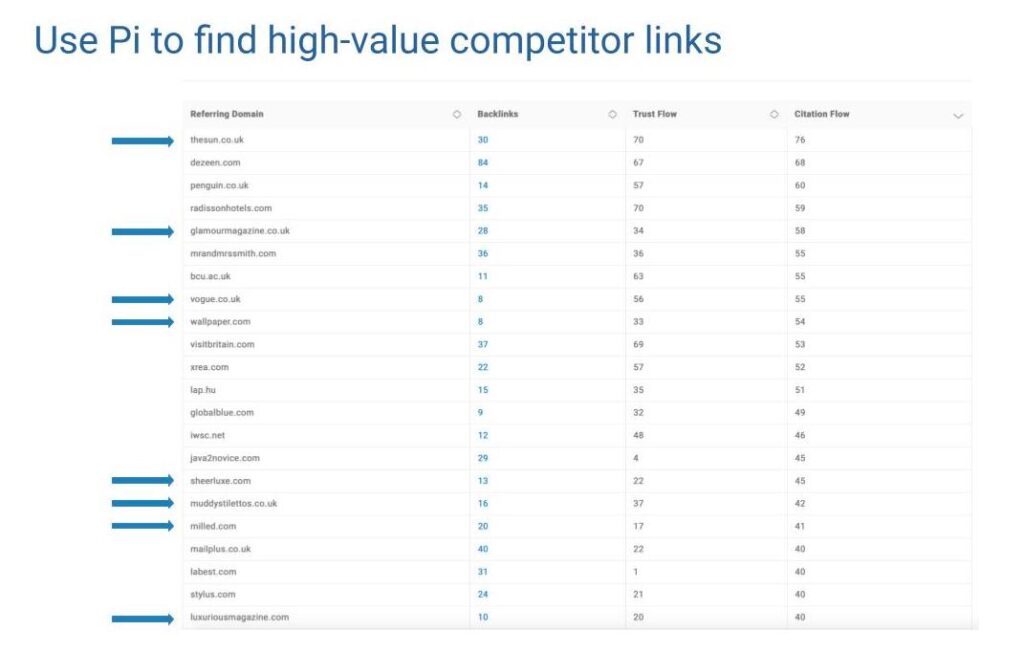
Pi Datametrics | Backlink Tool
Reactive tactics
Things change and new search trends will come along.
And when these new opportunities present themselves, it’s really important to have some tactics in place in order to get a step ahead of your competitors.
One of which is making use of Google’s People Also Ask feature. Utilise this feature in the right way and you’ll know exactly what your audience wants to know about a certain topic or product – key to a successful content strategy.
If you want to learn more about how to create intent-led content using Google’s People Also Ask feature, read our article here.
Evaluate
Determine ranks and visibility
Daily data is so important. Being able to track your performance every day is vital.
In Pi, set up alerts to ensure you don’t miss conflict issues or if important movements in positions happen. Then take a look at your daily data to work out why these changes have occurred, allowing you plenty of time to take action straight away.
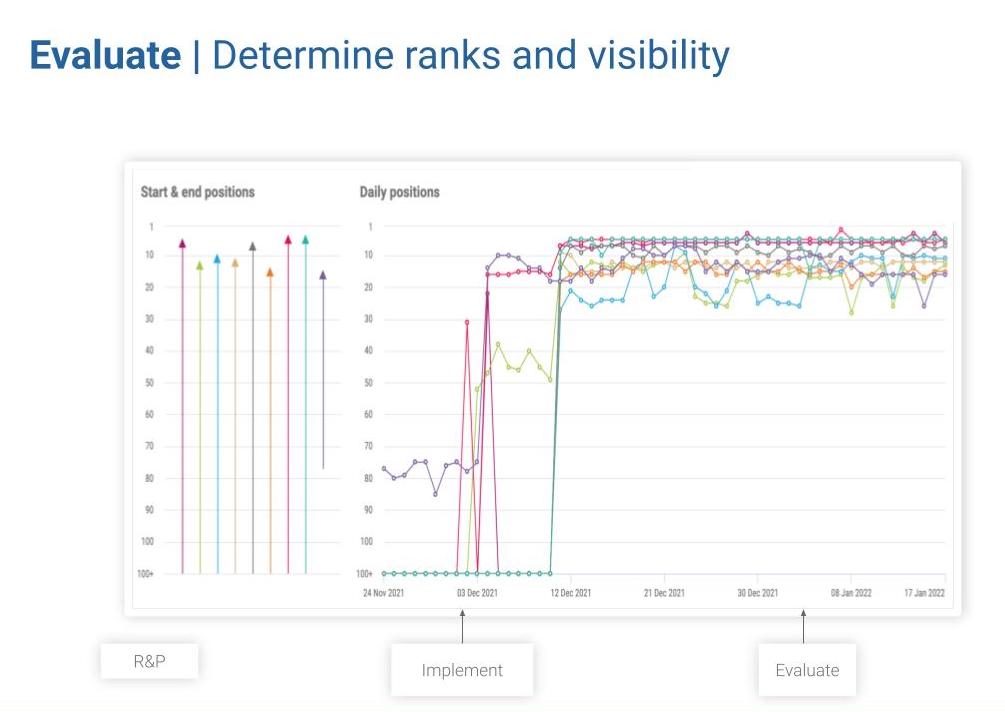
Pi Datametrics | Daily Data
Monitor SERP doorways
We often find that the businesses who own the top spot in their sector understand the SERP landscape on a granular level. They know what type of content they need to optimise and when.
One easy way to do so is using Pi’s SERP matrix. Take a look at positions one, two and three – what type of content is most likely to return for those positions? Is it a classic link, video carousel or knowledge panel?
Once you understand which features take up the most real estate for your search terms, you can optimise your content and strategy accordingly.
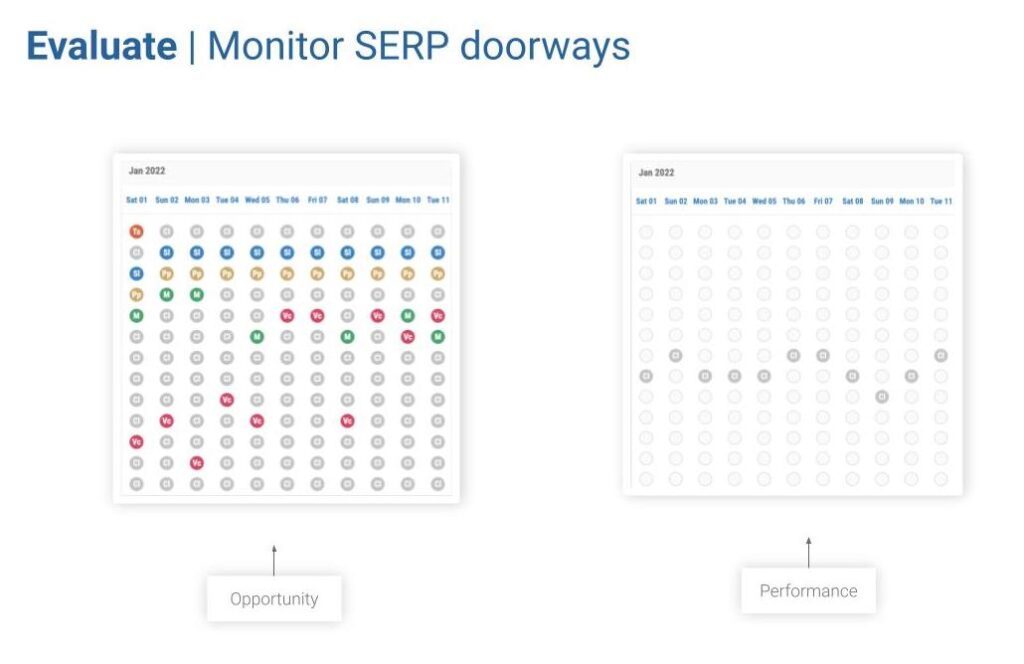
Pi Datametrics | SERP Matrix
Assess content performance
But remember, don’t just look at your own performance and data in isolation. Assess your content performance in the context of your competitors and see how you stack up.
Using Pi’s Visibility Index you can view your industry as a whole and where you sit within that industry.
You’ll be able to view how the visibility of your website (and your competitors’ websites) change at any point in time, who is moving up (and down!) and which categories are being hit by potential algorithm updates.
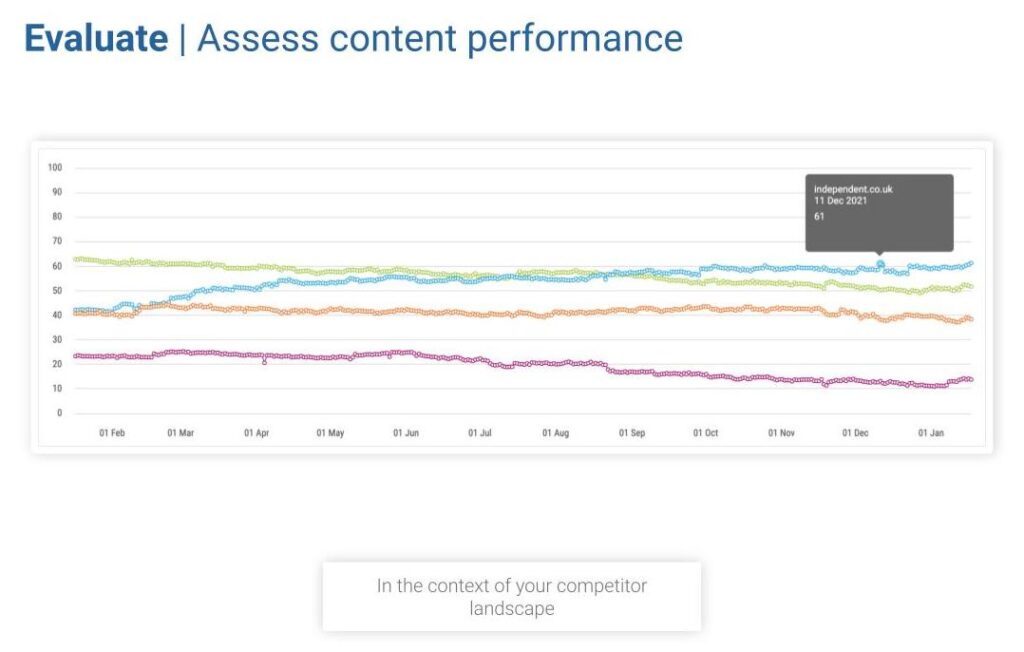
Pi Datametrics | Visibility Index
Value perspective
Taking stock of your share of voice within your industry is a great evaluation tool and a great indicator of whether you’re focussing on the right content.
It’s also a great tool for demonstrating to senior stakeholders the value of your work and where the business is currently placed in the market.
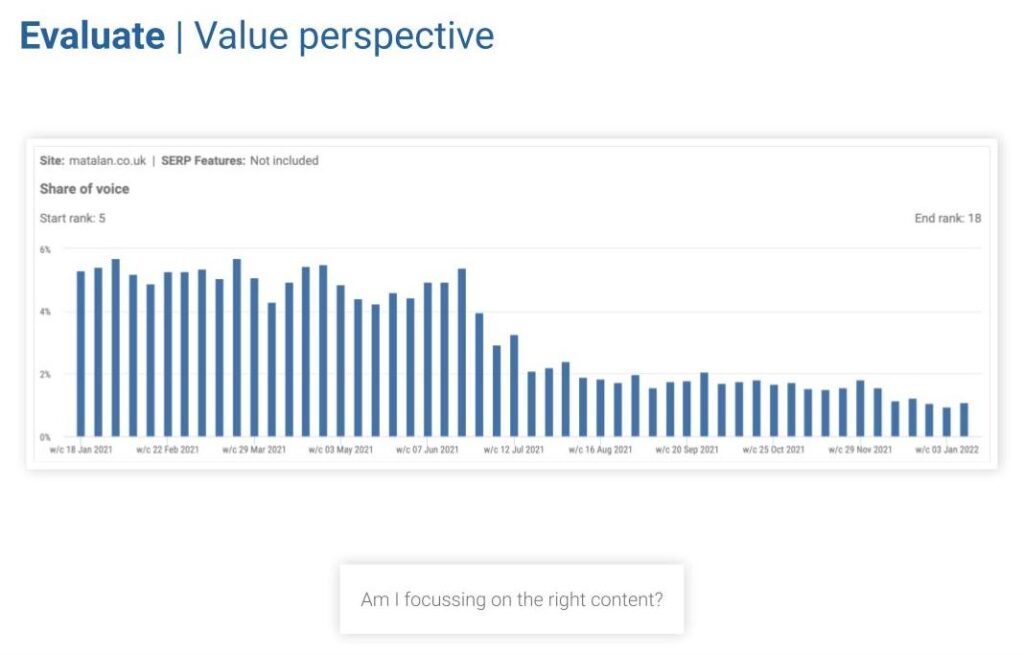
Pi Datametrics | Share of Voice Chart
At Pi, we don’t just look at the search volume. We look at search volume, position, CPC rates, and how competitive a keyword is. We combine all of these metrics together to get a true understanding of the share of voice for any site.
Own the top spot in your sector
And when you’ve got the basics down, how do you go above and beyond your competition?
- Build a strong in-house SEO team that has a spot at the decision-making tables within the business
- Upskill in a way that works for your team (provide ongoing training and education)
- Foster a data-informed culture within your team and wider business
- Find new areas of opportunity using the ever-changing SERP landscape
- Think about the mindset of the customer and anticipate their needs. Optimise for the user, not just the search engine
Found this useful? Then you won’t want to miss our next webinar.
Our SEO experts will be joined by paid search experts from our partners Kinase to share tips on how to boost search ROI and maximise audience growth by blending PPC and SEO strategies. Sign up to join the webinar here.
Never miss a post
Join our mailing list and have our SEO news delivered straight to your inbox.

